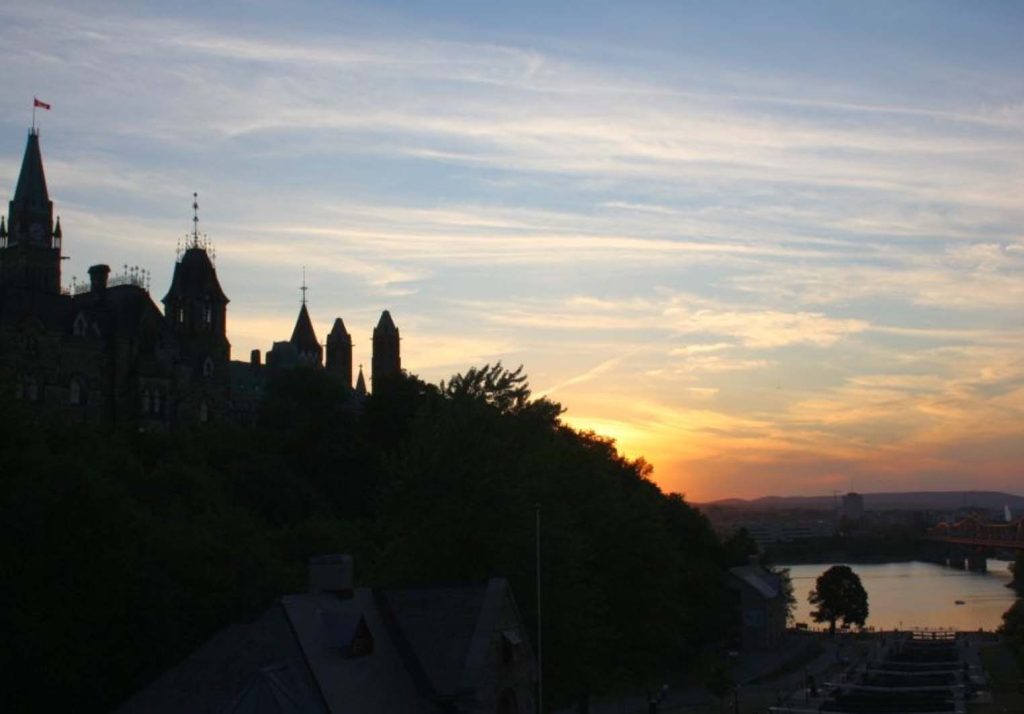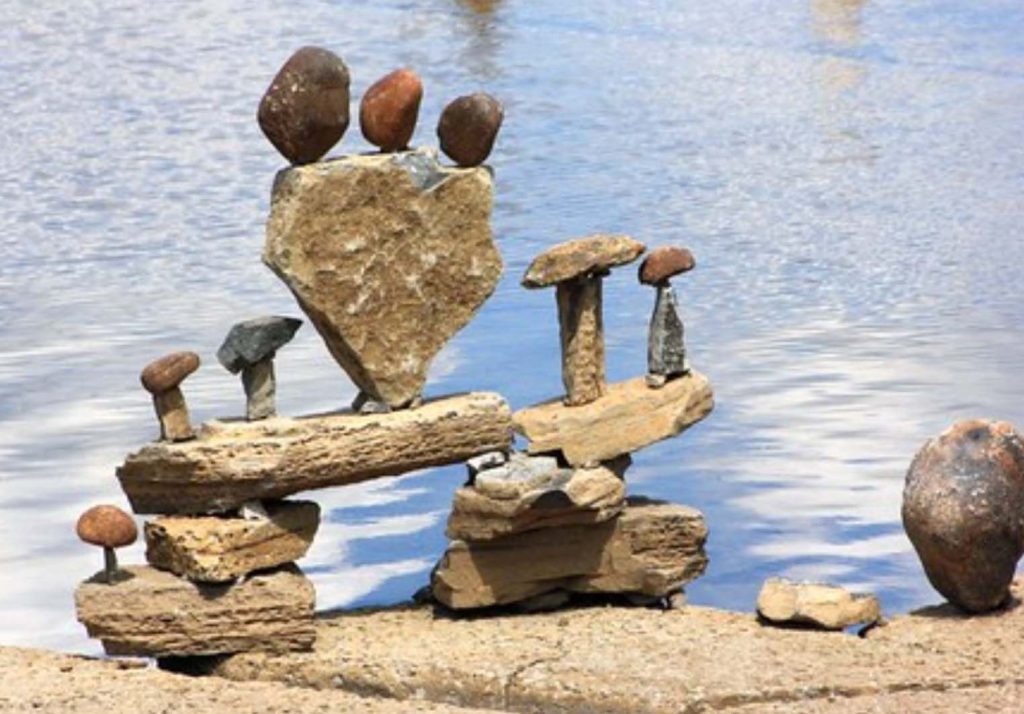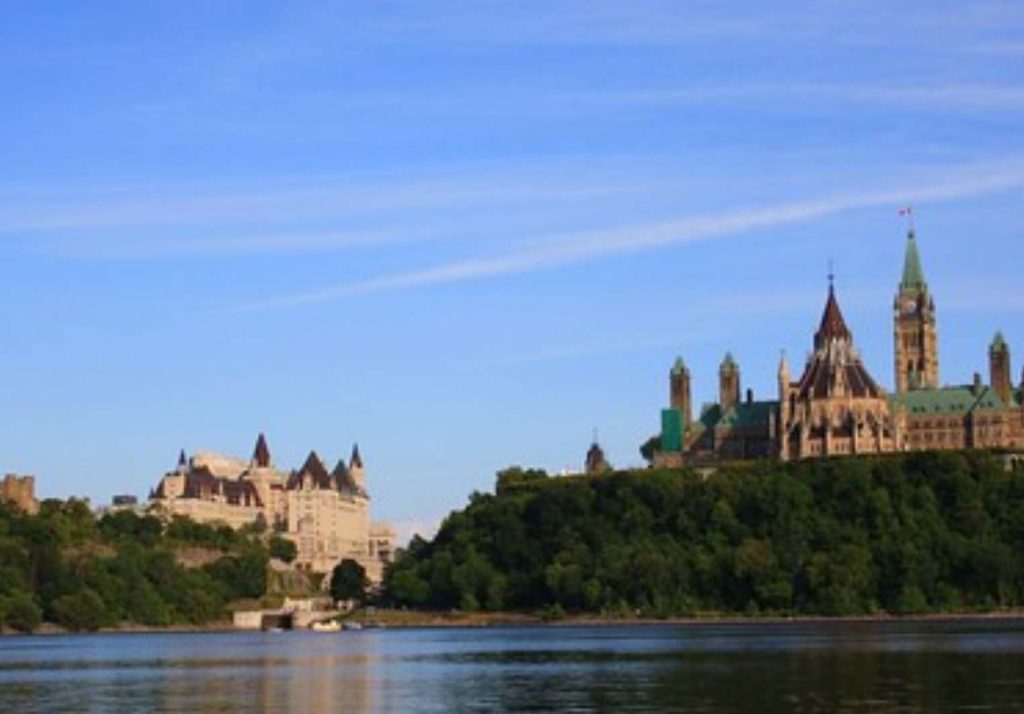Ottawa, the capital of Canada, is celebrated for its pristine environment and abundant green spaces. It’s a city where you’ll encounter some of the most amiable and welcoming people globally, making it an ideal place to immediately feel relaxed and at home. Nevertheless, the true essence of conquering Ottawa lies in understanding the pivotal role played by the canal locks – known as “ship locks.”
At the core of Ottawa’s distinctive character lies the iconic Rideau Canal. This canal, a UNESCO World Heritage site, stretches for 202 kilometers, connecting Ottawa to Kingston, originally constructed for military purposes in the 19th century. Today, it stands as a symbol of Canada’s rich historical heritage and remarkable engineering accomplishments, while also serving as a cherished recreational area for locals and tourists alike.
The ship locks along the Rideau Canal are a focal point of Ottawa’s allure. These locks comprise an interconnected system of waterways that facilitate the movement of boats and ships across elevation variations between the Ottawa River and the city’s higher inland regions. They provide a captivating spectacle as vessels, ranging from small craft to larger ships, are carefully raised or lowered through a series of water chambers.
However, it’s not merely the engineering marvel that makes these locks so special; it’s the ambiance that envelops them. In the summertime, this area comes to life with people leisurely strolling, biking, or simply basking in the beauty of the canal. The picturesque surroundings, with lush greenery and well-maintained walkways, create an idyllic setting for leisurely walks and picnics.
Visitors can savor a tranquil boat journey through the locks, offering a unique perspective of the city. The gentle swaying of the boat, the soothing sounds of the water, and the experience of navigating the locks is both calming and enthralling. In the wintertime, the canal transforms into the world’s largest naturally frozen skating rink, drawing skaters from near and far.
In Ottawa, these locks symbolize not only a remarkable engineering feat but also the city’s harmonious coexistence with the natural world. They epitomize the fusion of modernity with the environment, reflecting the city’s commitment to preserving its natural beauty. As you observe vessels navigating through the locks, or as you experience the excitement of a bike ride along the canal, you’ll come to understand why Ottawa is a city that captures your heart, not only due to its warm-hearted residents and cleanliness but also due to the unique allure of its ship locks. It’s a city that seamlessly melds urban vibrancy with the tranquility of nature, making it a must-visit destination for those interested in exploring Canada’s rich history and its awe-inspiring natural landscapes.

Constructing the Canal
Although Ottawa is now known for its warmth and hospitality, it wasn’t always this way. Nearly 200 years ago, a British colonel by the name of Colonel By was dispatched to protect Canada from the perceived threat of American aggression, as it was rumored that the neighboring United States was planning to invade Canadian territory via the St. Lawrence waterway. As it turns out, when we journeyed through this city last summer, I was not the first American attempting to conquer this region of Ontario.
Colonel By’s mission was to construct the Rideau Canal, which would circumvent the St. Lawrence River bordering New York, ensuring a supply and communication route between the British naval bases in Montreal and Kingston. The journey would take travelers along the Ottawa River to Bytown (named after Colonel By, which was originally a makeshift town in the wilderness and is known today as Ottawa), and then continue southwest via the canal to reach Kingston before flowing into Lake Ontario.
The Rideau Canal’s locks in Ottawa today, these eight impressive locks are a perfect starting point to explore the city. Locks 1 through 8 have now been designated as a UNESCO World Heritage site, lowering the water level of the Rideau Canal to meet the Ottawa River at a depth of 30 feet below. The grand Parliament Hill and the majestic Fairmont Château Laurier Hotel both stand high above the Rideau, giving this area of Ottawa a distinctly old-world charm. Strolling along the pathways next to the locks imparts a relaxing feeling, and the Bytown Museum (can you guess its name?) is a great place to learn more about this engineering marvel.

Cycling in Ottawa
In order to explore more of the city, we headed to Rentabike, located just a stone’s throw from the museum along the canal, less than 50 meters away. After taking in a wealth of advice from the shop owner, we hopped onto our handsome cruiser bikes and never looked back. First, we pedaled along the canal, away from the river, passing the paddleboats on Dow’s Lake and stopping at the thundering roar of Hog’s Back Falls.
After renting our bikes at Ottawa Hogsback Falls for 30 minutes, we already felt liberated from the confines of the city and quickly veered northwest into the countryside fields. We were now riding through an area known as the Central Experimental Farm, a true urban oasis, with acres of crops, lush green grass, classic red barns, and farm animals. From here, it was easy to find signs for bike lanes leading back to the city center. Continuing west, the path intersected with the Ottawa River, where we stumbled upon the rock art of Jean-Félice Ceprano, a truly inspiring discovery we would never have encountered without our bikes.
Ottawa is a city for cycling, with thousands of Ottawans (who are, of course, very polite) enjoying outdoor activities during their commutes. In fact, we were told that Ottawa is a cycling-friendly city. It’s a great way to explore and get a different perspective of the city while enjoying the fresh air and scenic views.we were informed that Ottawa boasts over 200 kilometers of bike lanes, yet during our 6-hour bike ride, we covered just 30 kilometers.

Beavertails and Boats
Before returning our bikes, it was time for a belated lunch at ByWard Market. This historic market, established by Colonel By in 1826, sprawls across nearly four blocks and is dotted with restaurants, bars, and some incredible specialty food shops. Following lunch, we made a stop at a highly specialized cheese shop, even offering our favorite Norwegian cheese brand! However, in a surprising display of self-control, we left empty-handed – but only because we knew where we were heading next: the Beavertails stand.
Beavertails, a classic Canadian deep-fried dough treat, was the perfect choice to warm up with in winter, best enjoyed with a hot coffee. You might have it as a post-skating treat on one of the world’s longest ice rinks. The Rideau Canal stretches for seven kilometers from the Ottawa River, turning Ottawa into a winter wonderland. When it reopens in mid-May, it sees several boats passing through the locks each day, some heading towards the Ottawa River. A century ago, this river was filled with thousands of logs as part of the timber trade, but now this waterside hotspot is crowded with speedboats, kayaks, yachts, and even white-water enthusiasts – though this occurs upstream and is about a 90-minute drive from downtown.
Rideau Canal Locks in Ottawa We wanted to both cruise on the river and take a city tour, and the Lady Dive Amphibus Tour satisfied both those desires. We boarded a bus, rode through the town, marveled at the architecture, and learned about Ottawa’s intricate history. Then, we took the plunge into the water beside the Britannia Yacht Club. One steady ride later, we floated past the Canadian Museum of Civilization, a massive museum that delves into 1,000 years of Canadian history and includes a children’s museum and a 3D IMAX theater. Be sure to plan at least a full day here, if not two.
From the water, you can also see Parliament Hill and the Fairmont Château Laurier Hotel. There’s also the National Gallery of Canada, considered one of the leading art museums in Canada. We truly enjoyed the permanent exhibitions here, which rival those of top international galleries. True culture enthusiasts might want to allocate at least half a day for a visit, but budget-conscious visitors should aim for Thursdays when the National Gallery offers free admission from 5 PM to 8 PM. Ottawa also boasts a wealth of public art, from statues of Canadian blues legend Oscar Peterson (located at the corner of Elgin and Albert Streets) to many statues atop Parliament Hill, including “Women Are Persons Too!” sculpture and a statue of Queen Elizabeth II that accurately captures the history of Canadian women.
After the boat tour, we headed to Parliament Hill to admire these statues and take advantage of the free guided tours of the Center Block, offered once daily and more frequently in the summer. This tour was most helpful in understanding the political history of the entire nation.

Just Across the Ottawa River
As we cruised on the Ottawa River, we were oblivious to the fact that we were floating along a fiercely competitive and well-preserved border. There were no border guards, and passports were not required. We hadn’t even left the city.
However, as we discovered during our visit to Parliament, the Ottawa River is the intersection of Canada’s English-speaking and French-speaking regions, and this socio-cultural border is vigorously upheld by both sides. Apart from the strict language differences on either bank, this fact might not be immediately apparent to the casual visitor. During our time in Ottawa, we unintentionally overheard snippets of French here and there, but it was during a day trip to Gatineau Park on the Quebec side, as we attempted to order lunch with our somewhat rusty French, that we realized the language division could pose a challenge. Luckily, for most of our day, words were not required as we hiked through the beautiful, green Gatineau Park.
Cycling Along the Rideau Canal
Ottawa boasts such fresh green spaces on both sides, and the same applies to the 202 kilometers of the Rideau Canal. You can explore these tranquil waters by boat, taking up to 7 days to pass through all 49 locks along the Rideau Canal to reach Kingston on the St. Lawrence River. During our time in Ottawa, we chose to spend most of it cycling and driving, meandering along scenic country roads that took us through picturesque towns like Merrickville and Perth. There are also trails suitable for hikers, cyclists, and cross-country skiers.
Regardless of how you choose to explore Ottawa, whether it’s by boat, bicycle, car, or kayak, a key to discovering the heart of the city is to start from its locks.

